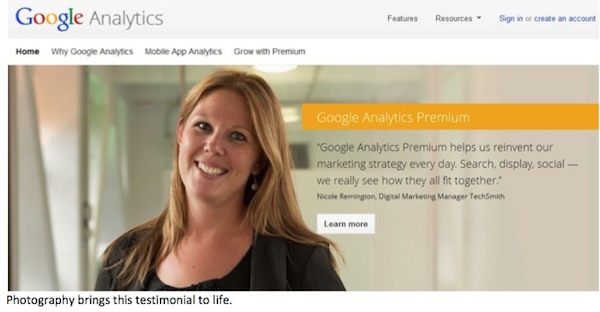Create killer case studies – tips for B2B marketers
Share
In this guest post, Lucy Poole shares her tips to help B2B marketers create great case studies.
Research by Zuni reveals 82% of decision makers rate case studies as the most important information source on the website of a potential supplier*. Case studies typically come into play near the end of the B2B purchase path and should reinforce the positive information prospects have learned along the journey thus far.
The challenge for B2B marketers developing case studies is to produce a series of compelling stories that demonstrate how their organisation’s products or services are used and valued by clients. It’s important they are well planned and strategic in intent, powerful enough to get prospects across the line.
Your approach must be customer-centric
I highly recommend spending time with your sales people before embarking on this journey. Join them on a prospect visit, or listen to inbound calls. Tune in to the prospect, note the questions they ask and the terminology they use to describe their challenges. Not only will you start to understand how your products can solve clients’ problems, you’ll learn how to frame yours as the solution to challenges common to many companies operating in the same space.
Highlight your USPs and how they benefit the client
Pay careful attention to the audience reaction during your sales pitch. Chances are the moment they become really interested, comment or ask questions will be when you’re talking about what makes your company unique. Be sure to call out your USP in the case study – it just might be the deal clincher, the reason you’re selected over a competitor.
Which clients should I profile?
That depends on your acquisition strategy. Are you going after start-ups or big names in FMCG? Select clients that are similar to those you’d like to acquire.
It’s great to have some well-known client logos on your site, but that may not be practical if your target market is SMEs. In this case you need to ask if these SME’s are well-respected in their industry (or in the area you’re claiming to have helped them with).
A range of clients operating in different industries is ideal and will help keep the sales funnel open to a broad range of companies.
If you have multiple products and services, ensure the clients selected allow you to effectively showcase them all.
Tips for formatting your case studies:
1. Extract tangible benefit sound-bites to call out in headlines or sub-heads, e.g. ‘Sales increased 400% after Zuni helped optimise our site.’
2. If possible create your case studies in multiple formats such as video, a microsite, long and short copy versions for broad appeal and wide reach. Ensure that all versions produced have a really clear call to action.
3. If your budget allows, I strongly recommend photography to bring your case studies to life and prove instantly that your clients are real people.

I hope this is helps to structure your approach to case studies.
Lucy Poole is B2B marketing consultant with digital marketing agency, Zuni.
* Survey conducted by Zuni in April 2013 with 60 marketing and business professionals.














